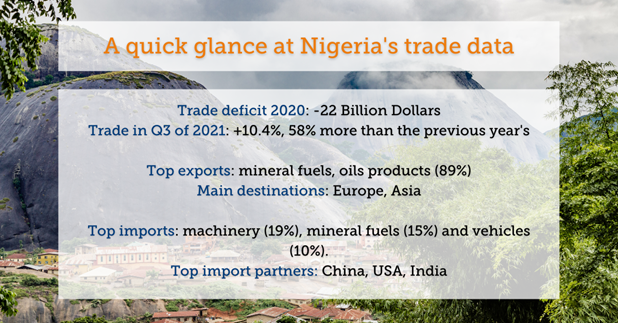Analysis and Studies - Country Analysis
Nigeria - Focus on Economy and Trade (2021)
February 22nd 2022
The country
Nigeria's gross domestic product (GDP) grew 3.4 percent in 2021, the strongest growth since 2014, when the country registered an incredible 6.3% increase. It is the most popular country of the OPEC zone with more than 200 million inhabitants.
Squeezing the data into quarters, data show that Nigeria GDP grew by a 3.98% YoY in real terms in the fourth quarter and showed a sustained positive improvement since the recession felt under the Covid-19 pandemic. The 2020 recession was the second in five years, with the other one in 2016: the economic situation in the last years has not been stable.
What are the main trends of the last year?
Well, first of all inflation decreased month-by-month, going from approximately 18-19% in January 2021 to around 15% in December. Even with the decrease of inflation, however, the nation continued to record increase in food prices.
What is important to be underlined however is that the national unemployment rate rose to above 33%, translating to some 23 million people: the rate is one of the highest in the world. Clearly, this aspect was made worse by the pandemic. Between 2015 and 2021, Nigeria’s unemployment rate has more than tripled.
What about Trade, instead?
For 2020, the trade deficit amounted to -22 Billion Dollars, from a +7.27 Billion in 2019. In Q3, Nigeria’s foreign trade grew 10.4%, more than +58% than Q3 of 2020.

The top exports of the country in 2020 were: Mineral fuels, oils and distillation products (89%), ships and boats (6%), and others. Crude oil among the first category is the most common export, a proof of the country’s richness of natural resources. The country exports these products above all to Europe and Asia.
The top imports of the country are: machinery (19%), mineral fuels and oils (15%), and vehicles (10%). These three make up more than $20 Billions of import expenses.
